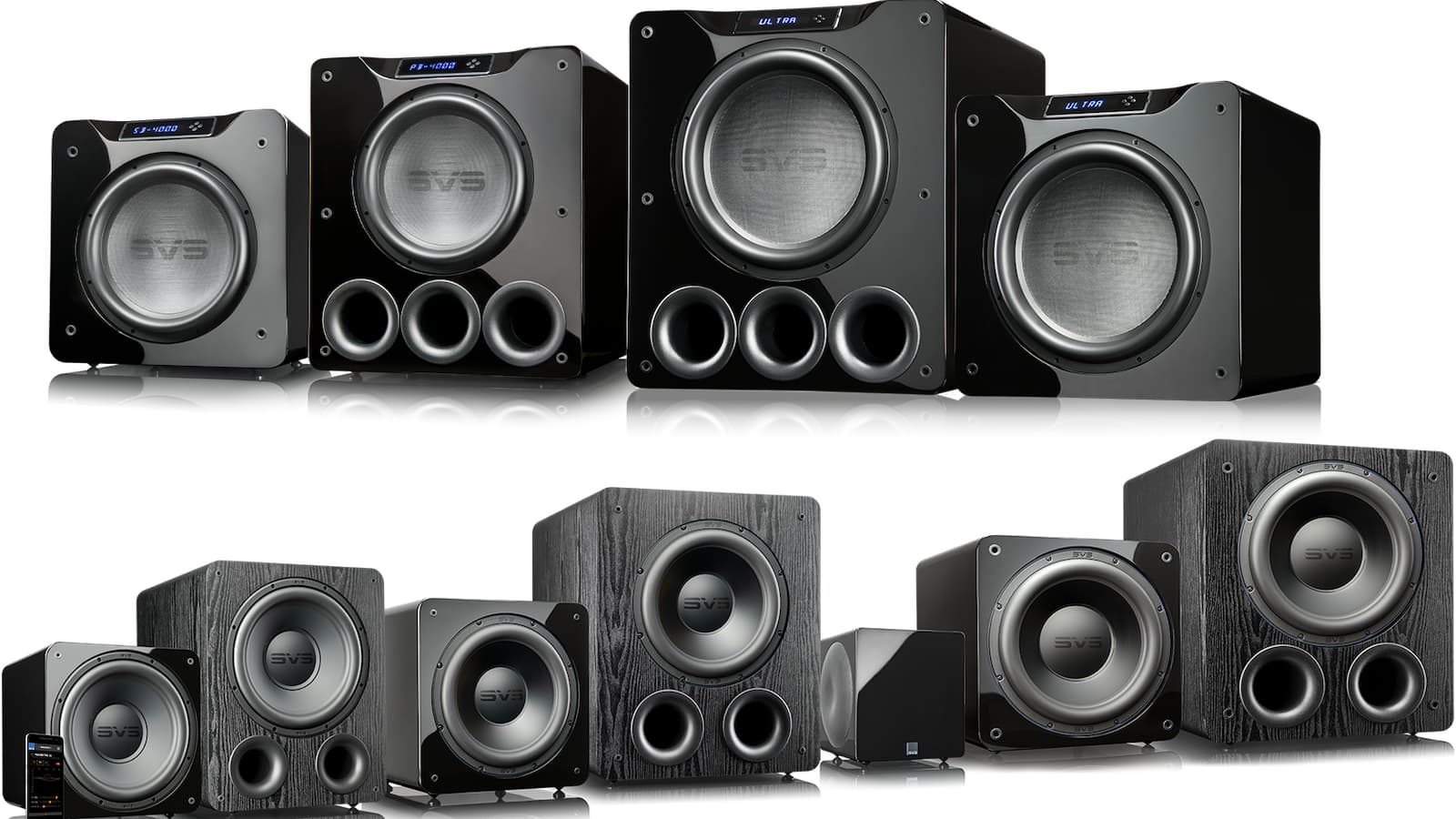
Which SVS Subwoofer Should You Buy?

SVS offers 14 different subwoofers priced from $599 to $2,899. Deciding which one to buy can be a daunting task, so we reached out to SVS to get some answers.
There are many variables to consider when choosing a subwoofer so it’s best to have a complete picture of the use case before assigning a specific model as the best solution for your room.
These factors include listening preferences, playback level, décor/room integration, room size, and budget. In general, most people start by choosing between ported or sealed subwoofers.
TLDR
Don’t want to read? Most people will be delighted with the SB-1000 Pro ($599). Buy two if you can. If you only have the space for one subwoofer, the upgrade pick would be the SB-3000 ($1,099) which hits the sweet spot for its low end extension and musicality. Again, consider a stereo pair if your budget allows.
What type of subwoofer should you buy?
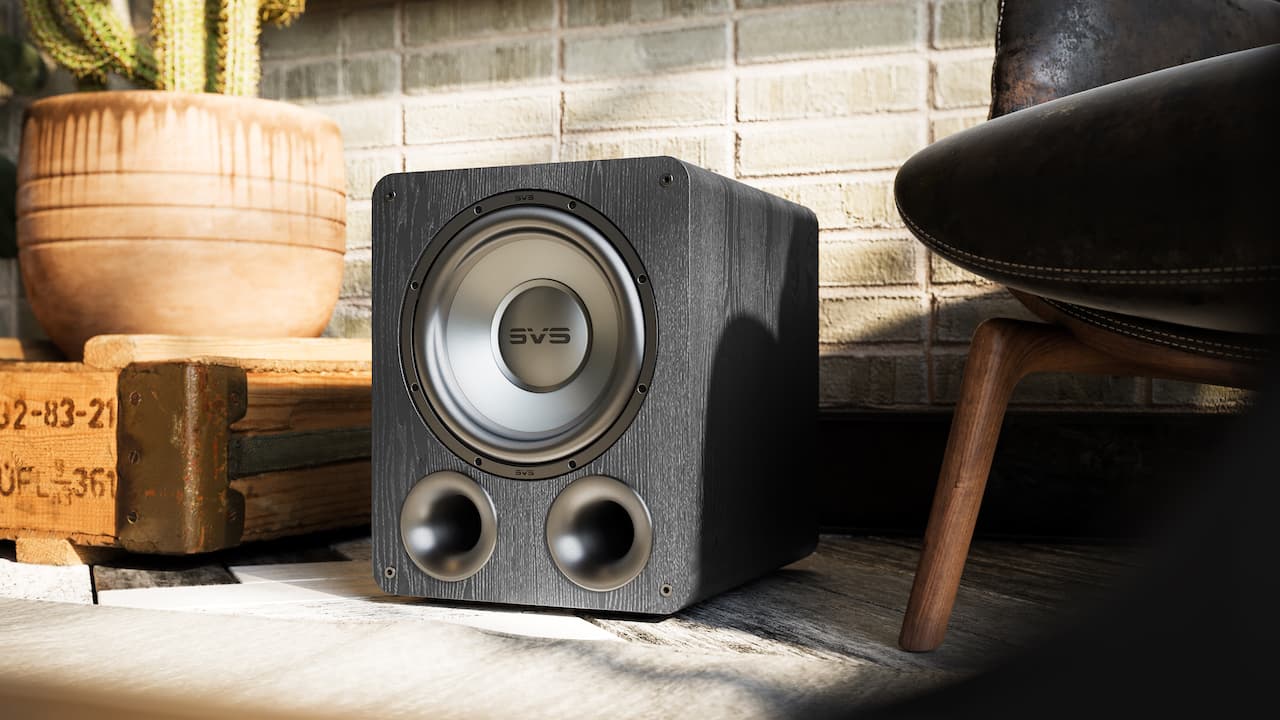
Ported subwoofers are generally larger and excel with greater output and deeper low frequency extension compared to sealed models with similar power and driver size specs. Ported cabinets are especially good for energizing large spaces and capturing the full visceral energy of action movies with big LFE tracks. People who really like to crank the volume will benefit from the ported design.
- PB-1000 Pro – $799.99
- PB-2000 Pro – $1,099.99
- PB-3000 – $1,599.99
- PB-4000 – $2,299.99
- PB16-Ultra – $2,899.99
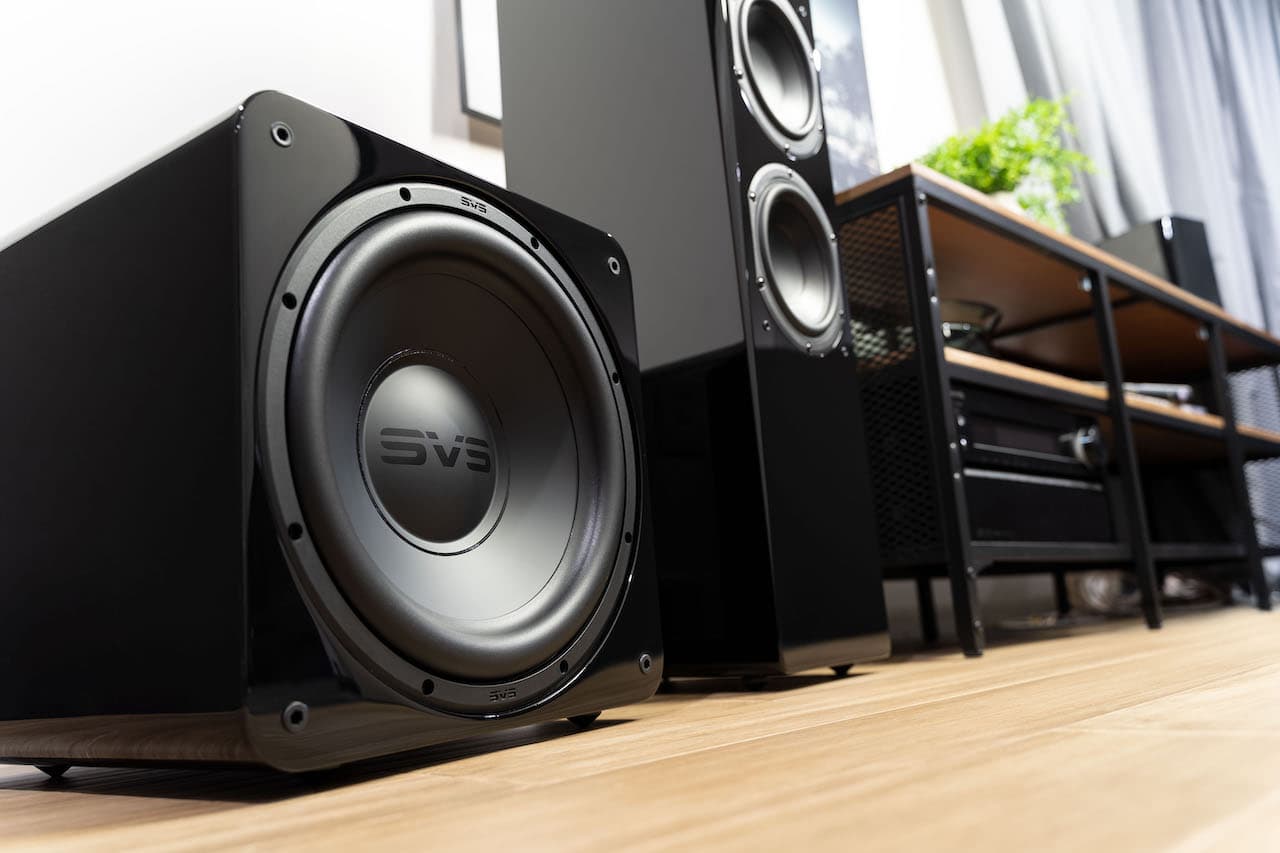
Sealed cabinet subwoofers are more compact and excel with accuracy, transient response, and musicality. They are generally the choice of audiophiles for that reason but can still deliver that guttural bass when called upon at a lower price than the ported counterparts.
- SB-1000 Pro – $599.99
- SB-2000 Pro – $899.99
- 3000 Micro – $899.99
- SB-3000 – $1,099.99
- SB-4000 – $1,799.99
- SB16-Ultra – $2,299.99
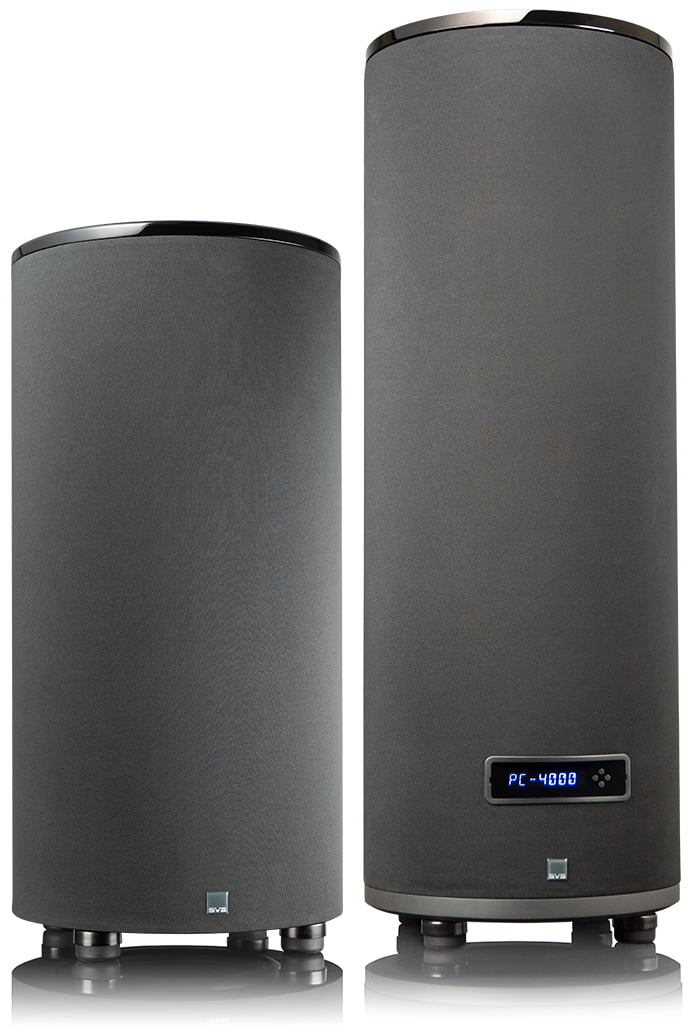
Cylinder subwoofers, which are also ported, are generally recommended when floorspace is a concern. You can essentially get ported box subwoofer performance from a cabinet that extends up vertically to minimize the footprint in a room. Some people also lay them on the side behind a couch or get creative with placement given the unique form factor.
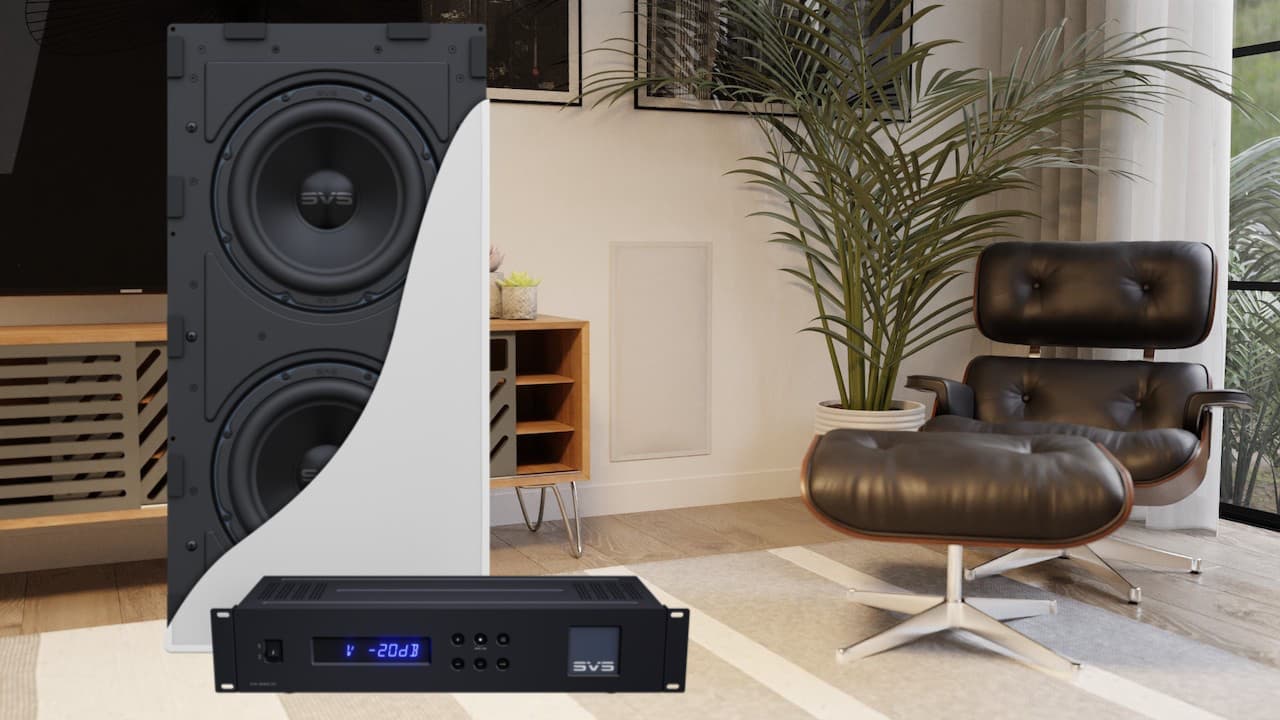
In-wall subwoofers are ideal when you want the subwoofer completely out of sight. This solution generally requires the help of a custom integrator, and is the only SVS option with external amplification.
- 3000 In-Wall – $1,999.99
How do they sound?
Once you’ve decided on ported vs. sealed, and box vs. cylinder vs. in-wall, choosing the best subwoofer depends on how much space you have, how loud you like to play, and the type of content you enjoy.
No matter which SVS you choose, it will deliver on five key performance attributes. As you move up the line, you will get greater dynamic output, deeper low frequency extension, and different connectivity options.
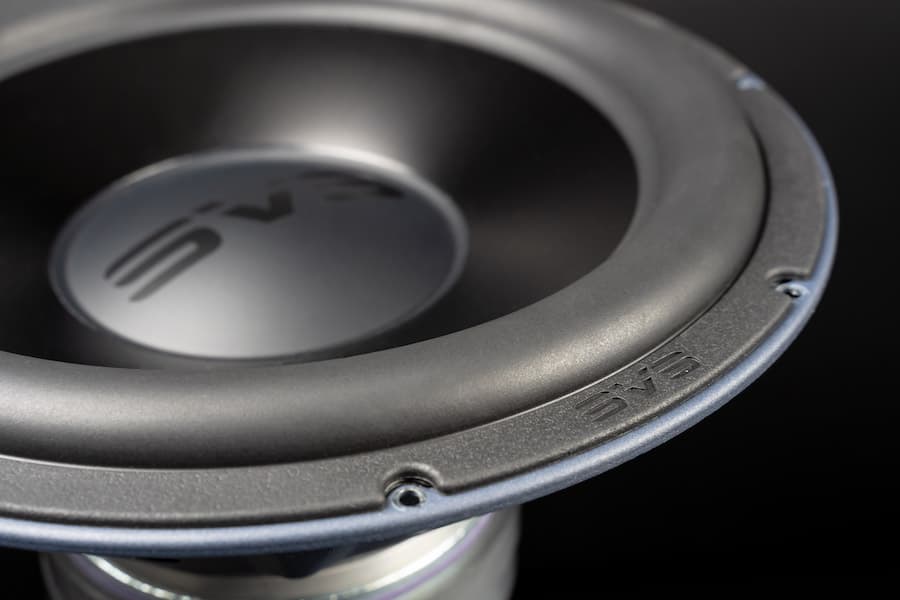
- Deep and Tactile Low Frequency Extension – Render the deepest low frequencies, down to 20Hz and below, with impact, so you can hear and feel the bass!
- Reproduce Lowest Frequencies at the Highest Sound Pressure Levels (SPLs) – SVS subwoofers play effortlessly loud and distortion free, no matter how demanding the cinematic or musical content.
- Accurate Frequency Response – Add no sonic signature and are completely faithful to the source content delivering the bass notes or low frequencies exactly as intended. It’s not just about the tonal quality though. SVS subs are also accurate in terms of the proportion of bass being produced so it’s not overwhelming the speakers with too much low end.
- Precise Speed in Transients – Frequently described as the ability to “stop and start on a dime,” SVS subwoofers (sealed models especially) have excellent speed in musical or cinematic transients and have no problem keeping pace with the content or with any kind of loudspeakers so the sound is always crisp and in perfect unison.
- Seamless Blending with Full Range Speakers – Bass is omnidirectional and SVS subs energize a room without overwhelming the soundstage or clearly announcing their location and presence in a distracting way. When properly set up, they seamlessly blend in as part of the soundstage.
All Models Compared
| Model | MSRP | Type | Driver | Watts (RMS) | Watts (Peak) | Freq. (low) | Freq.(high) | Height | Width | Depth | Weight | In/Out | Remote |
|---|---|---|---|---|---|---|---|---|---|---|---|---|---|
| PB16-Ultra | $2,899 | Ported | 16” | 1500 | 5,000+ | 13Hz | 360Hz | 25” | 21.7” | 30.9” | 207 lbs | RCA, XLR | Y |
| SB16-Ultra | $2,299 | Sealed | 16” | 1500 | 5,000+ | 16Hz | 460Hz | 20” | 19.5” | 20.1” | 122 lbs | RCA, XLR | Y |
| PB-4000 | $2,299 | Ported | 13.5” | 1200 | 4,000+ | 16Hz | 200Hz | 23.4” | 20.5” | 30” | 153 lbs | RCA, XLR | Y |
| PC-4000 | $2,199 | Cylinder | 13.5” | 1200 | 4,000+ | 16Hz | 200Hz | 46.9” | 16.5” | – | 92 lbs | RCA, XLR | Y |
| 3000 In-Wall | $1,999 | In-wall | 9” dual | 800 | 2500+ | 22Hz | 250Hz | 26.76” | 13.76” | 1.34” | 26 lbs | RCA, Spkr-out | |
| SB-4000 | $1,799 | Sealed | 13.5” | 1200 | 4,000+ | 19Hz | 310Hz | 18.3” | 17.8” | 20.9” | 102 lbs | RCA, XLR | Y |
| PB-3000 | $1,599 | Ported | 13” | 800 | 2,500+ | 16Hz | 260Hz | 21.9” | 18.3” | 26” | 82 lbs | RCA | |
| SB-3000 | $1,099 | Sealed | 13” | 800 | 2,500+ | 18Hz | 270Hz | 15.6” | 15.2” | 17.8” | 55 lbs | RCA | |
| PC-2000 Pro | $1,099 | Cylinder | 12” | 550 | 1,500+ | 16Hz | 290Hz | 34.4” | 16.6” | – | 47 lbs | RCA | |
| PB-2000 Pro | $1,099 | Ported | 12” | 550 | 1,500+ | 16Hz | 290Hz | 20.9” | 17.3” | 23.6” | 65 lbs | RCA | |
| SB-2000 Pro | $899 | Sealed | 12” | 550 | 1,500+ | 19Hz | 240Hz | 14.6” | 14.2” | 15.6” | 39 lbs | RCA | |
| 3000 Micro | $899 | Sealed | 8” dual | 800 | 2500+ | 23Hz | 240Hz | 13.9” | 15.4” | 15.4” | 23 lbs | RCA | |
| PB-1000 Pro | $799 | Ported | 12” | 325 | 820+ | 17Hz | 260Hz | 18.9” | 15” | 20” | 43 lbs | RCA, Spkr-in | |
| SB-1000 Pro | $599 | Sealed | 12” | 325 | 820+ | 20Hz | 270Hz | 13.5” | 13” | 14.76” | 26 lbs | RCA, Spkr-in |
What’s different between each series?
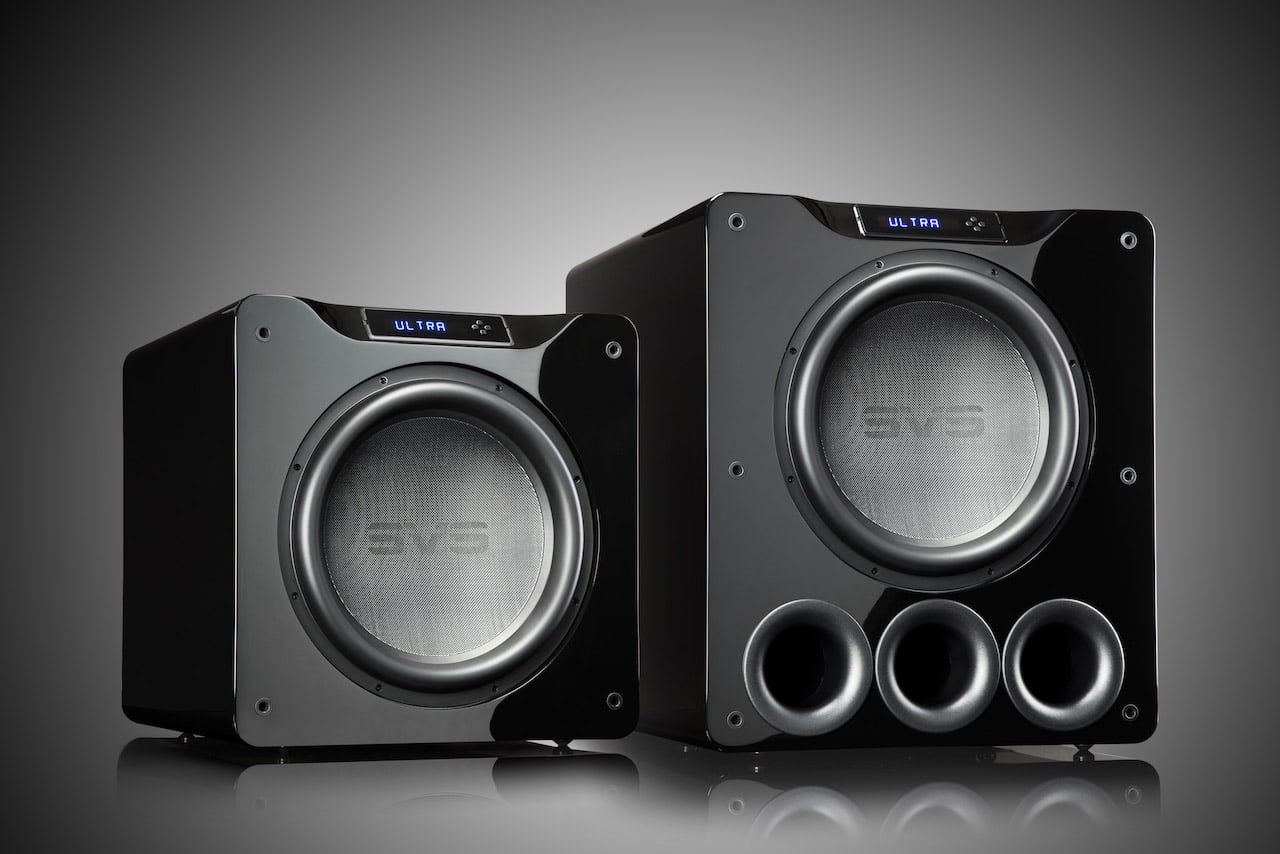
16-Ultra Series: Introduced in 2016, the flagship SB16-Ultra (sealed) and PB16-Ultra (ported) redefine what is possible with cost-no-object design and engineering. Fit for large rooms and the finest home theaters and Hi-Fi systems.
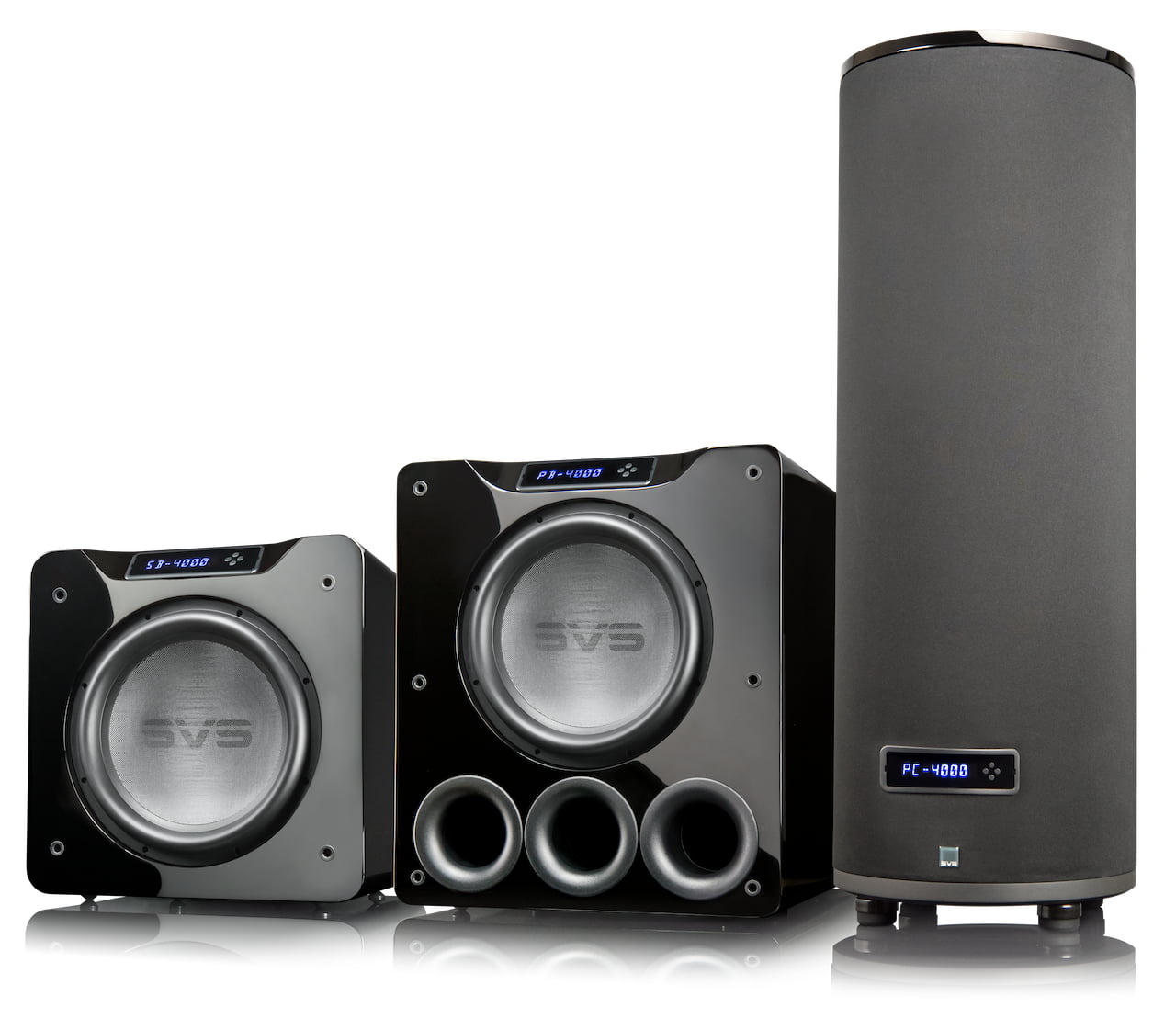
4000 Series: Introduced in 2017, the 4000 Series nearly match the performance of the Ultra models with smaller drivers and cabinet sizes. The sleeper of the range is the unique cylinder shaped subwoofer that saves floorspace while delivering chest-pounding, pinpoint accurate output comparable with ported box designs. Although each model in the series will have unique characteristics based on their design, SVS says they’re brutally powerful yet subtle and nuanced.
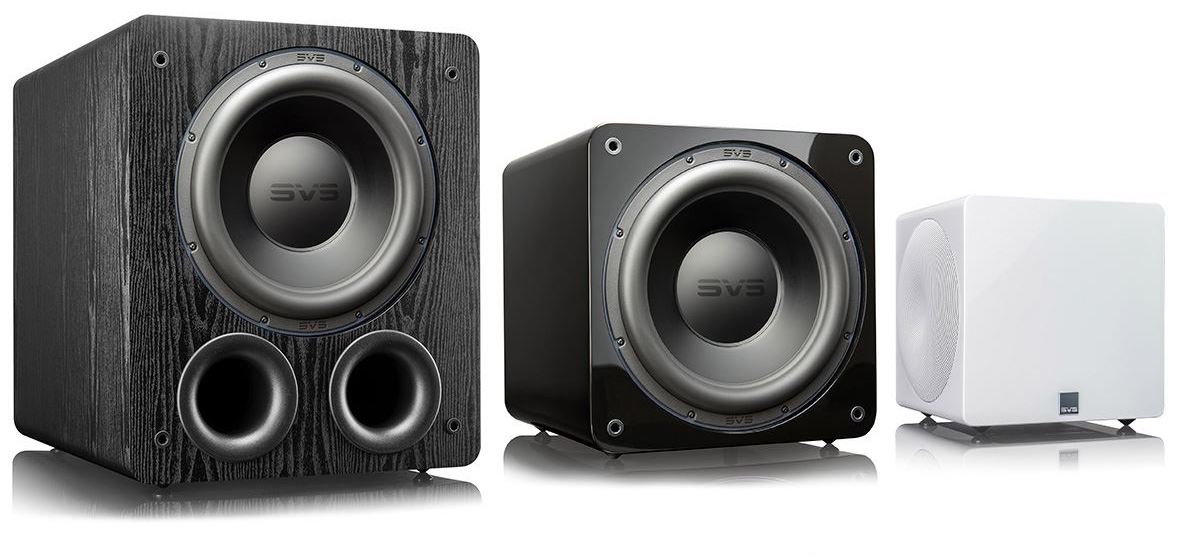
3000 Series: Exactly in the middle of the line-up are four subwoofer variations. Sealed or ported designs hit the ultimate sweet spot with massive output, subterranean extension, and audiophile musicality. Want something less conspicuous? The 3000 In-Wall subwoofer (2023 model) delivers massive, cinematic bass with no floorspace required, while the 3000 Micro (2021 model) is the smallest boxed subwoofer SVS makes, yet it can still provide stunning depth with audiophile refinement.
- 3000 In-Wall – $1,999.99
- SB-3000 (sealed) – $1,099.99
- PB-3000 (ported) – $1,599.99
- 3000 Micro (sealed) – $899.99
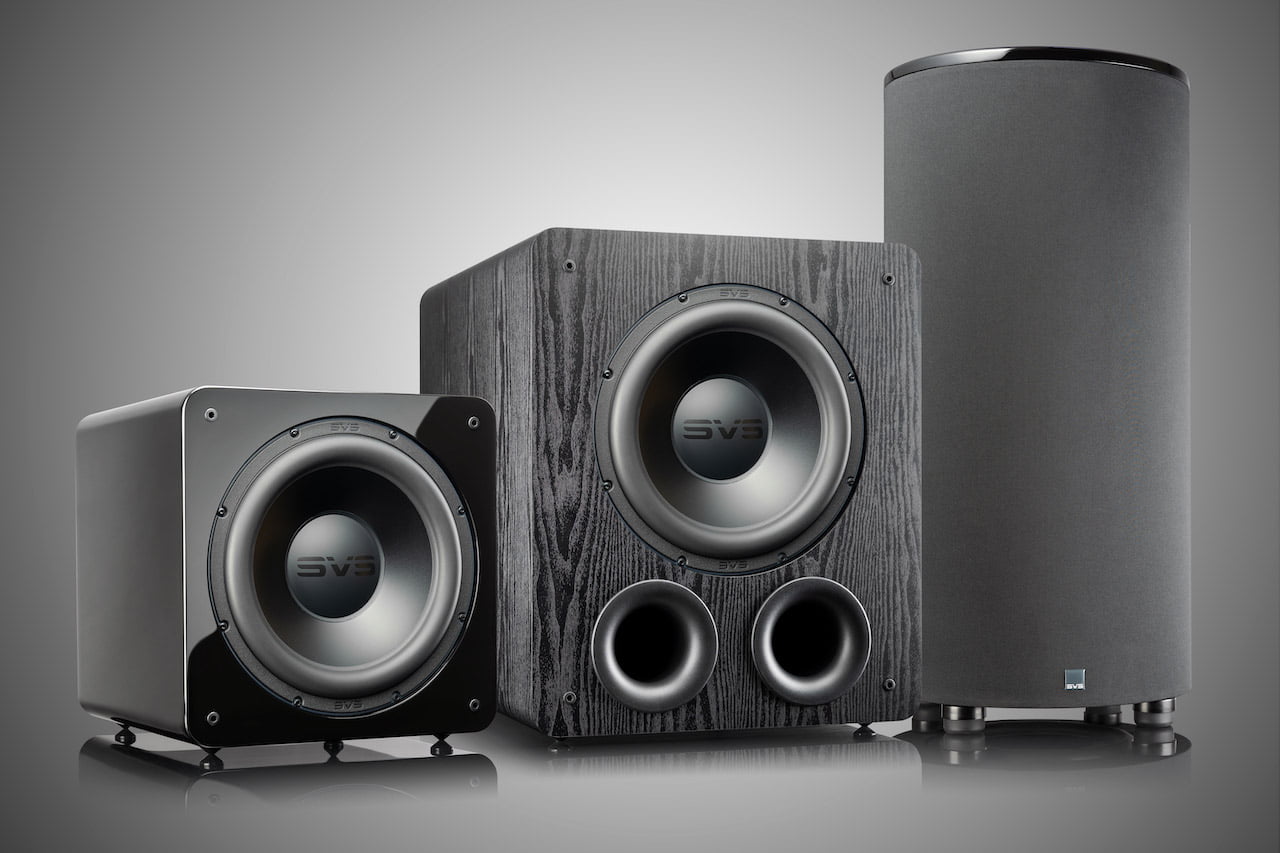
2000 Pro Series: Introduced in 2019, the three 2000 Pro Series subwoofers all dig below 20 Hz for deep bass extension with astonishing detail and accuracy. Each brings reference subwoofer performance to more affordable price points.
- PC-2000 Pro (ported cylinder) – $1,099.99
- PB-2000 Pro (ported) – $1,099.99
- SB-2000 Pro (sealed) – $899.99
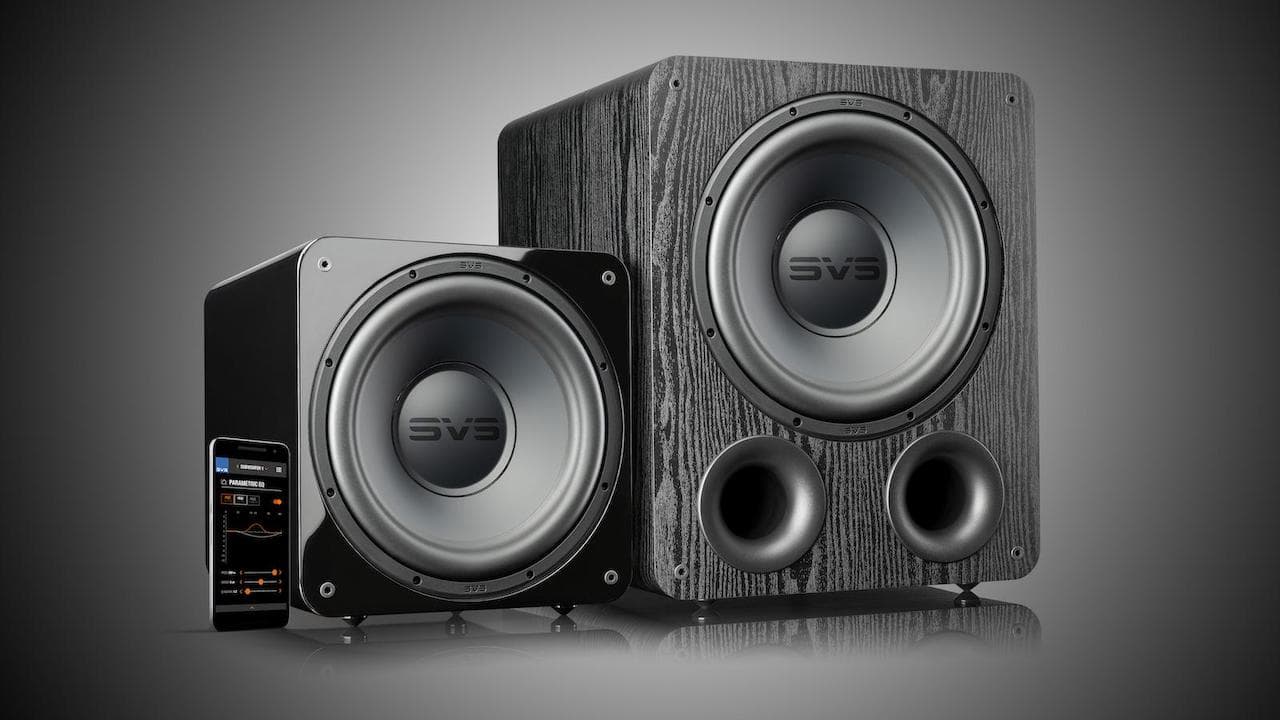
1000 Pro Series: Introduced in 2021, the entry-level line comes in sealed or ported versions which redefine subwoofer performance in their price class. Choose sealed for stunning musicality or ported for heart-pounding output with greater extension.
Tip: The SVS SB-1000 Pro won our budget subwoofer shootout!
Should you buy more than one subwoofer?
The most important reason to go with two or more subwoofers is to improve bass response throughout the room so all listening areas enjoy the same low frequency impact and depth. Dual subwoofers do this by removing phase cancellation, or nulls, which occur when two sound waves from a single home theater cancel each other out, reducing the bass you hear in that spot.
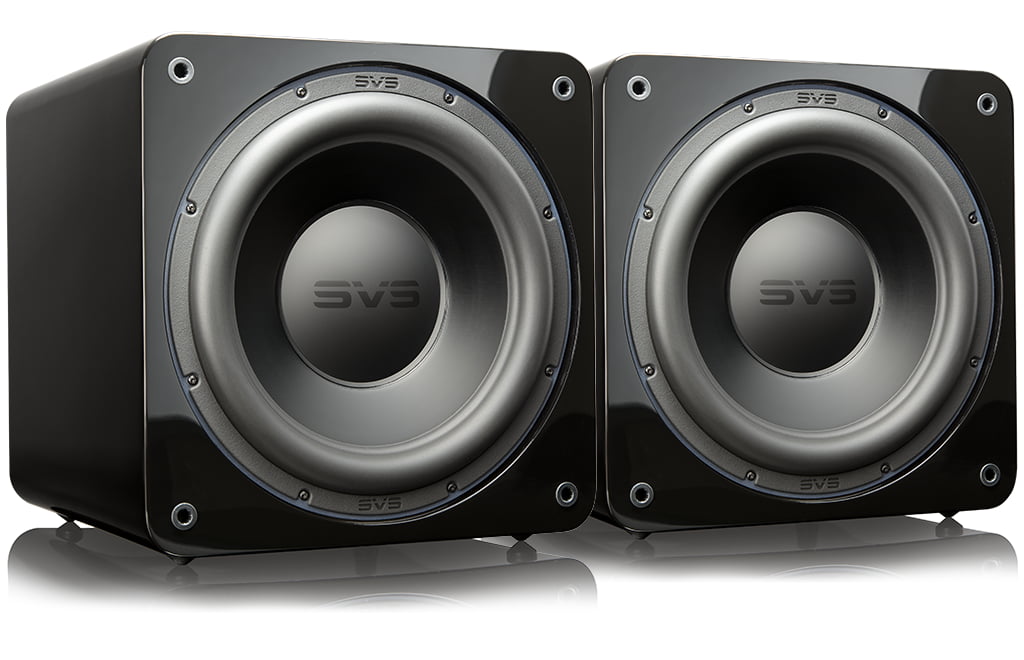
This happens when there is a delay between sound waves reaching your ears directly from those bouncing off a wall or other room surface, which reach your ears an instant later.
You can also get “boomy” spots in a room called peaks where the bass collects and sounds louder. A single subwoofer is often at the mercy of a room, but dual subs smooth peaks and nulls, and take control of the room with effortless, accurate bass. Bear in mind, that doesn’t mean more bass — but more accurate bass response at your listening position.
Multiple subwoofer setups offer increased dynamic output capabilities, or as some people like to call it, more headroom. The combined power of two or more powered subs working in tandem can result in greater dynamic range, better SPL capabilities and more impactful bass.
Another reason relates to the directionality of bass. Simply put, multiples are much harder to localize than a single sub. It’s often possible to hear where a single is placed in the room, particularly if it is not located in the front stage. In comparison, multiple subs are nearly impossible to localize and give the sensation of bass all around, coming from every direction.
The final reason to go dual is when décor and aesthetics are a factor. Two smaller subwoofers are sometimes easier to place and conceal in a living room or home theater if lifestyle considerations are at play.
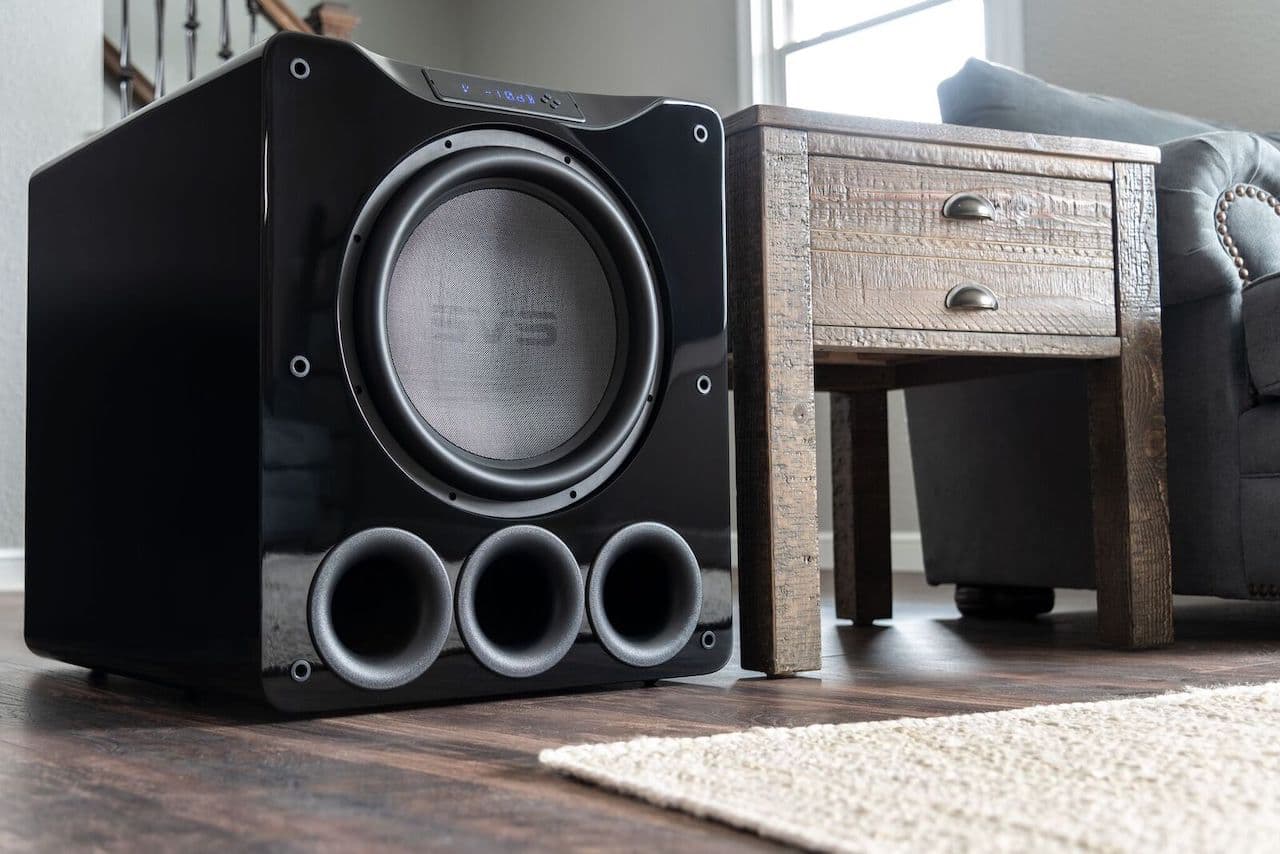
If price is the same, should you buy one larger model or two smaller subwoofers?
In general, SVS recommends using two subwoofers versus a single subwoofer. It’s certainly not required, but the benefits of dual subwoofers often outweigh the advantages of having a single larger subwoofer at the same price. Many owners choose to buy a single subwoofer with the idea they can always add a second later if performance is not at the level they expected.
When choosing two subwoofers choose the same model for the best possible blending. Mixing models can create phase issues that actually detracts from the quality of bass. Generally, you want to match the driver size and amplifier power as closely as possible so they are close enough sonically to generate even bass response throughout the listening area without to much variance in the output levels, transient speed, and low frequency extension capabilities. If you do need to mix different brands or models, the SVS team can always assist with tips for using DSP to get them blended as closely as possible.
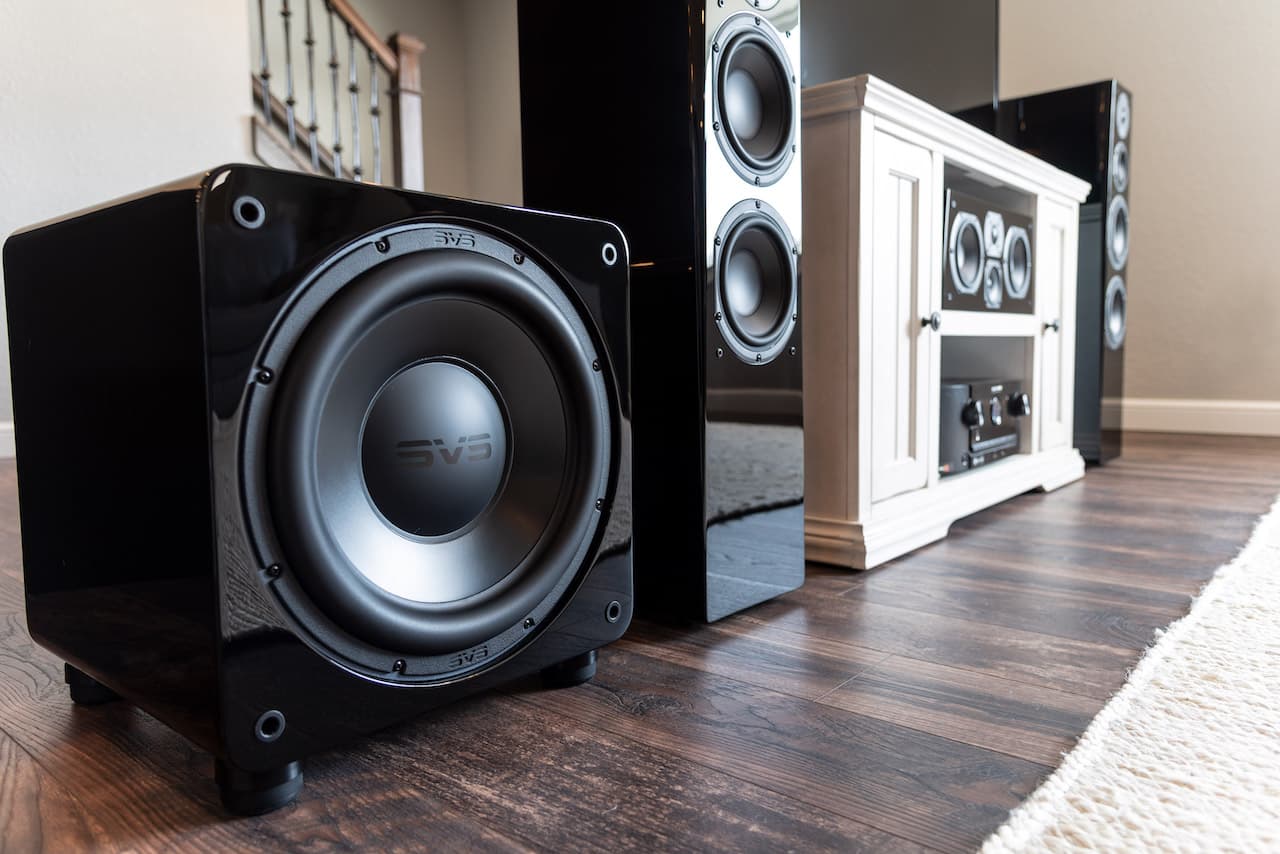
What are the most popular SVS subwoofers?
The SVS SB-1000 Pro ($599) and the SB-3000 ($1,099) are the two most popular subwoofers. The sealed cabinet design makes both models relatively compact and easy to place in a room, so many owners choose to integrate two of each. Two subwoofers also hit the sweet spot in terms of maximizing performance at very inclusive prices relative to the larger ported models and those with similar performance specs from competitors.
Both the SB-1000 Pro and SB-3000 also excel as all-around performers hitting down to 20Hz and deeper, for the visceral bass extension and impact movie lovers crave, while still sounding accurate and musical for the audiophile listeners.
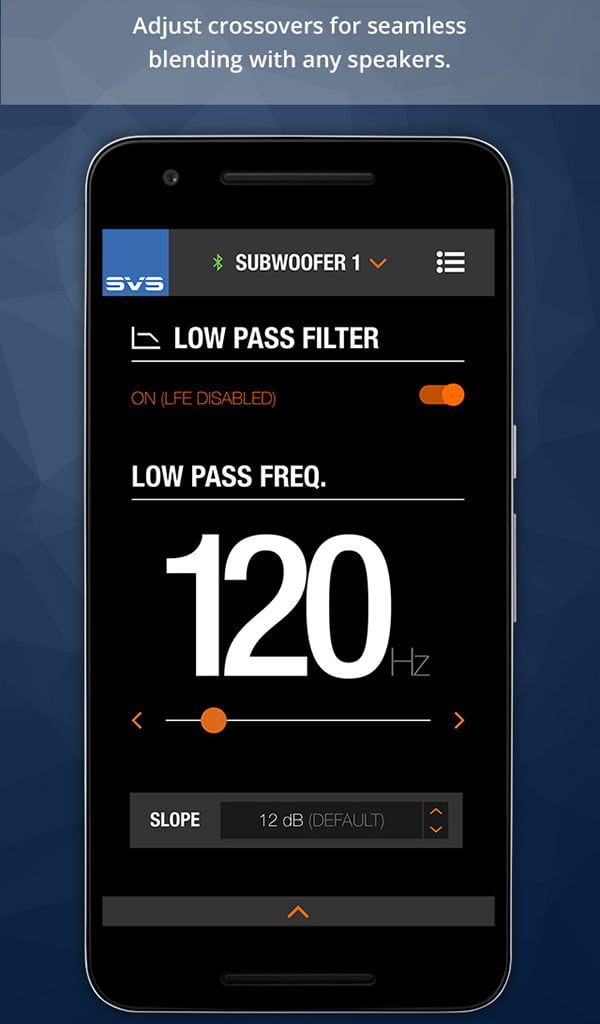
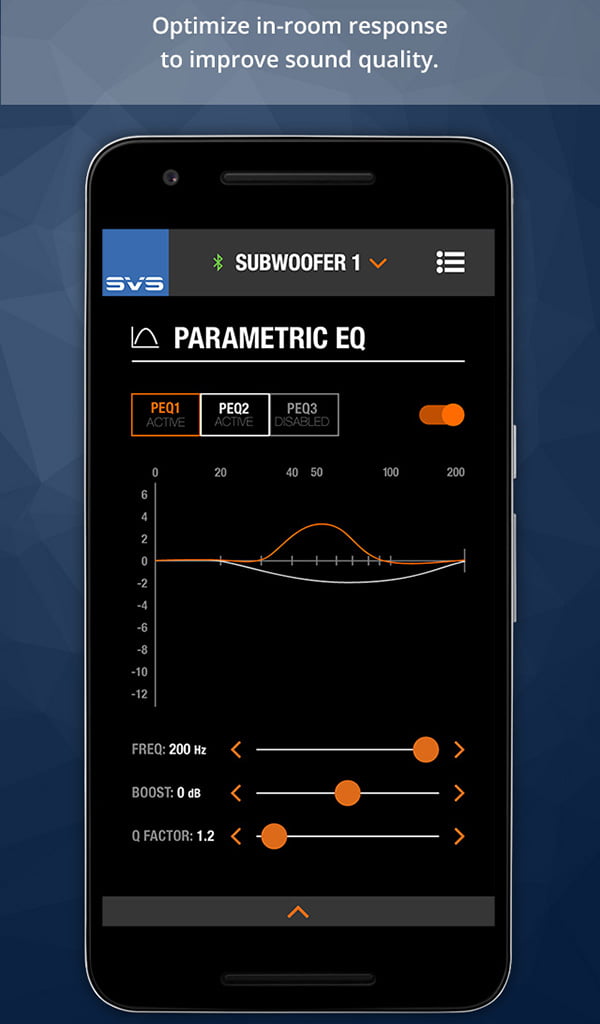
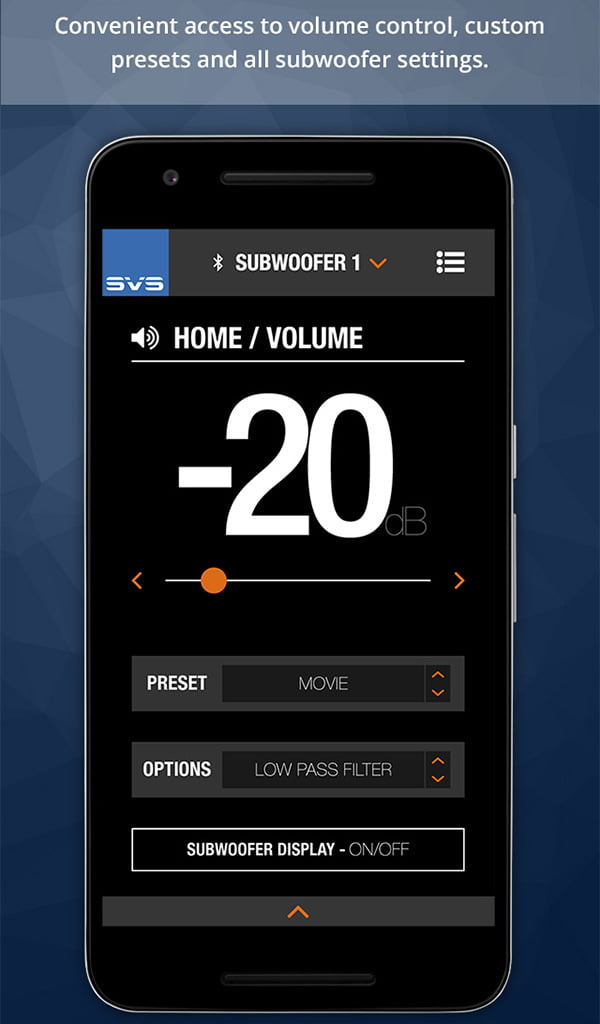
What are features only SVS offers?
- All SVS subwoofers work with the SVS Control Smartphone App for convenient configuration, which makes it easy to adjust volume, phase, room gain, 3-band parametric EQ, polarity and more. You can also create custom presets with saved settings for music and movies.
- Sledge Amplifier technology combines high current output of discrete MOSFETs with Class D efficiency to generate massive output without distortion.
- 50 MHz Analog Devices DSP shapes the frequency response behavior of SVS subwoofers to work in conjunction with natural occurring room gain to produce more accurate sounding bass without the “boominess”.
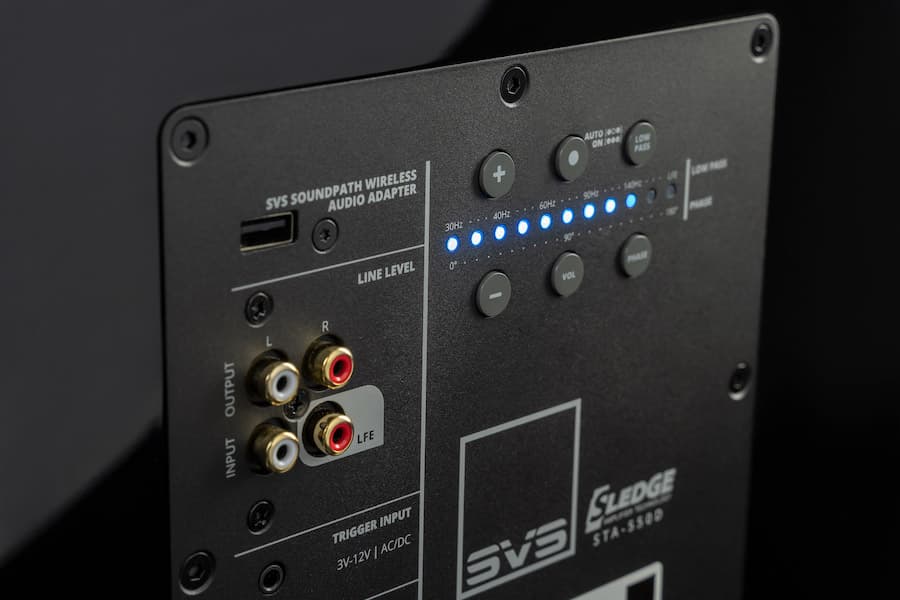
How to connect a SVS subwoofer?
- All SVS subwoofers are wireless compatible, but require the purchase of a SoundPath Wireless Adapter ($119).
- Every SVS subwoofer can be connected via a single RCA interconnect cable from an A/V Receiver’s LFE output into the subwoofer’s LFE input.
What else do customers need to know?
SVS Sound Experts are available 7-days-a week via phone (877) 626-5623, chat or email to help with product questions, system setup, order support, and more.
SVS Customer Bill of Rights:
- Fast and free shipping and no-hassle returns
- 45-day in-home trial
- SoundPoints loyalty rewards program
- Trade-up program
- Price match guarantee
- 5 year unconditional warranty on all SVS subwoofers
Tip: Try out the SVS Matching tool. Choose your speaker brand/model and get three SVS subwoofer recommendations along with their suggested settings. Also check the SVS blog for more tips and advice.
Where to buy SVS?
SVS subwoofers are available from svsound.com (manufacturer direct) and from the online retailers such as Amazon and Crutchfield. Instead you may want to locate a SVS dealer near you. The pricing should be the same regardless where you make your purchase.
Still have a question? Ask it in the comments below or let us know what you purchased or already own.

